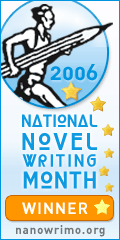With the announcement of the forthcoming release of the Kindle 2, we're now being beseiged with negative exposition over ebook technology - e-ink readers, ebooks themselves, cost, etc. - in numerous columns, blogs and reviews, the latter in both print and broadcast media. To hear some people, you'd have to picture the average ebook customer as a near-autistic savant incapable of functioning in normal society or as some socially-inept nerd who's idea of reality is closer to ABC's "Chuck" than modern America.
Yeah. Right. We all know the truth. E-books, and e-book readers - especially e-ink readers - are here to stay and gaining popularity by leaps and bounds. Amazon has finally admitted to selling nearly 500,000 Kindles (version 1) and the combined US sales of Sony PRS, Bookeen Cybook, iRex iLiad and Jinke V3 (Or it's variant the BeBook - click on the title of this post to find out more about the BeBook.) are nearly as high. That mean there are, just for e-ink devices, nearly 1 MILLION ebook customers in the US. Add in the 2-3 million people who use their iPhones, PDAs and desktop or laptop computers and it is obvious that ebook reading is here and broadly popular!
But one thing slows the spread of ebook-specific device acceptance. Cost. It's bad enough that one has to shell out several hundred bucks for an iPhone with it's tiny 4-inch display, especially when one also, in modern America, needs to own at least a $400 netbook, if not a $600-$1,000 desktop system. But then the ereader market insists upon charging anywhere from $229-$359 for a 6-ink e-ink device!
And these devices are all pretty much still first-generation. To be honest, there's little difference in display technology between the Sony PRS-500 and the Kindle 2, except the firmware and the controller for the display. There's no color, the screen refresh rate is still far slower than what is needed to support animation and we still need an external (yes, the light on the PRS-700 is in front of the screen) or "front" lighting system if we wish to read in low-light areas.
But all the technical issues are being improved and within two years we CAN expect to see many of these features to be present in the average ebook reader.
Which leaves cost. The one bugaboo which all nay-sayers have targeted. Okay, let's consider cost.
How many of you remember the Data General DG-1? Anyone? Anyone? Yep. The first truly "portable" computer recognizable as a "laptop". This sucker ran MS-DOS, could only hold a maximum of 512KB - that's right KILObytes! - of RAM, had a MONOCHROME, grayscale screen capable of 640x200 pixel resolution, needed to be near a power outlet if one wanted to use it for more than an hour, weighed NINE pounds and cost a "cost-effective" $2,895!!! Compared to the average EEE PC 900 (8.9" screen, 1GB RAM, SSD "drive" of 16GB size, $299 price and weighing just over two pounds), the DG-1 was a monstrous dinosaur! And the price differential, my gosh!
But that's what happens as technology improves and manufacturing processed get more efficient. Still, if one HAD to have a laptop back in 1984, the DG-1 made its owner vastly more productive than NOT owning one.
And that holds just as true for e-ink ebook readers. We've managed to move past "bleeding edge" and "innovator-level" and, with the BeBook, Kindle 2, PRS-700 and Cybook Gen3, are into "early adopter" phase. Prices will continue to fall as features are added.
So when your friends and neighbors show you the various nay-saying columns from these luddites and neanderthals, you remind them of these facts. Then poin them your favorite ebook reader and tell them to give one a try.









